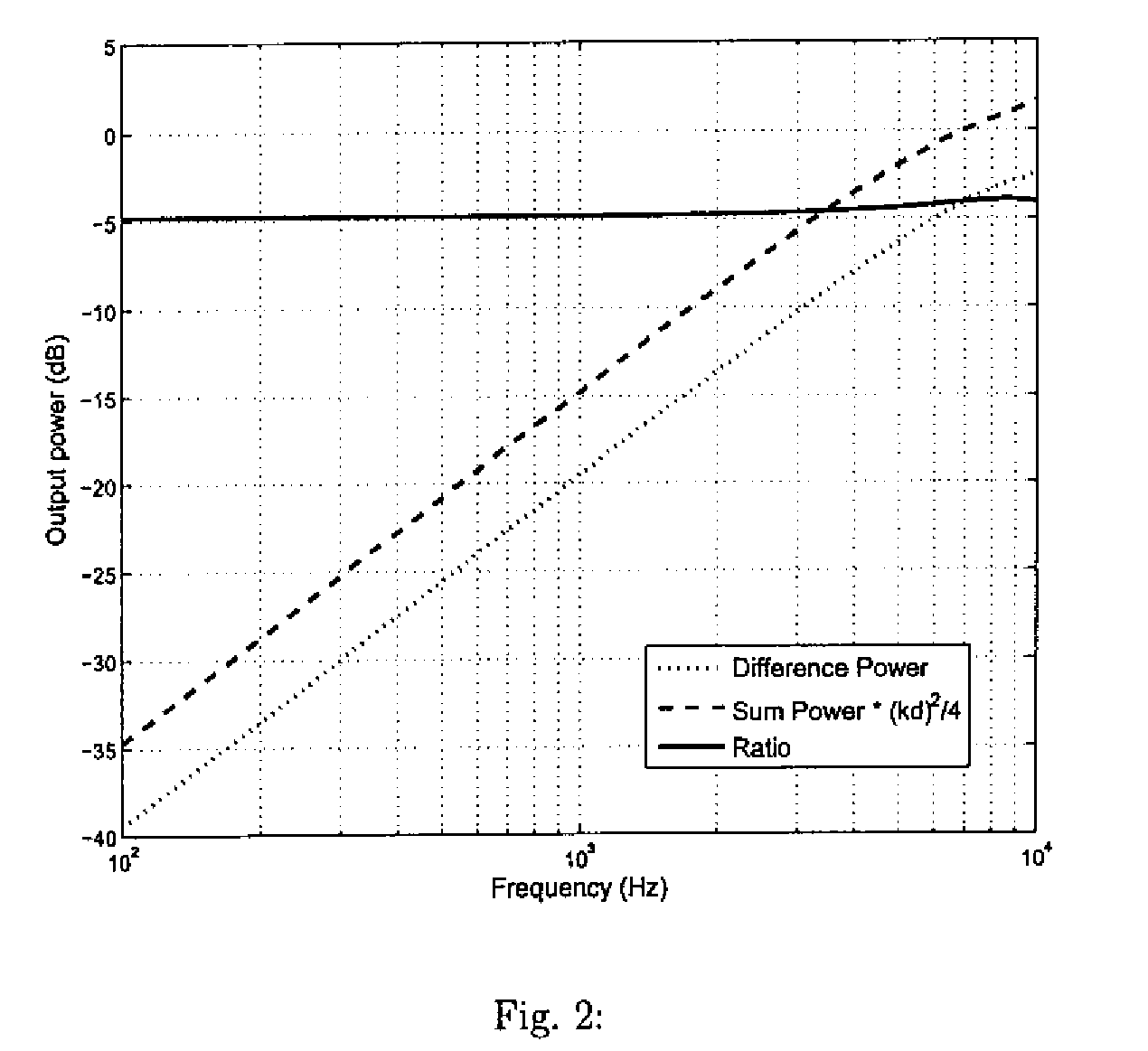Dual-Microphone Spatial Noise Suppression
a dual-microphone and spatial noise technology, applied in the field of acoustics, can solve the problems of not being physically desired, the directional gain that can be achieved by only two acoustic pressure microphones is limited to first-, and the reverberation and noise of the room are typical problems, so as to achieve the suppression of acoustic noise in speech, the suppression of off-axis signals is higher, and the added directional gain is small.
- Summary
- Abstract
- Description
- Claims
- Application Information
AI Technical Summary
Benefits of technology
Problems solved by technology
Method used
Image
Examples
Embodiment Construction
Derivation
[0028]To begin, assume that two nondirectional microphones are spaced a distance of d meters apart. The magnitude array response S of the array formed by summing the two microphone signals is given by Equation (1) as follows:
S(ω,θ)=2cos(kdcos(θ)2),(1)
where k=ω / c is the wavenumber, ω is the angular frequency, and c is the speed of sound (m / s), and θ is defined as the angle relative to the array axis. If the two elements are subtracted, then the array magnitude response D can be written as Equation (2) as follows:
D(ω,θ)=2sin(kdcos(θ)2).(2)
[0029]An important design feature that can impact the design of any beamformer design is that both of these functions are periodic in frequency. This periodic phenomenon is also referred to as spatial aliasing in beamforming literature. In order to remove frequency ambiguity, the distance d between the microphones is typically chosen so that there is no aliasing up to the highest operating frequency. The constraint that occurs here is that ...
PUM
 Login to View More
Login to View More Abstract
Description
Claims
Application Information
 Login to View More
Login to View More - R&D
- Intellectual Property
- Life Sciences
- Materials
- Tech Scout
- Unparalleled Data Quality
- Higher Quality Content
- 60% Fewer Hallucinations
Browse by: Latest US Patents, China's latest patents, Technical Efficacy Thesaurus, Application Domain, Technology Topic, Popular Technical Reports.
© 2025 PatSnap. All rights reserved.Legal|Privacy policy|Modern Slavery Act Transparency Statement|Sitemap|About US| Contact US: help@patsnap.com



